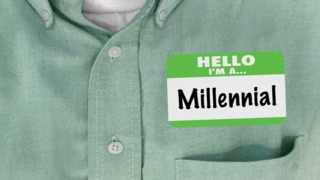Preparing Your Print Business for a Millennial Workforce
The millennial generation is poised to have a major impact on the business model of print. It’s a fairly timely topic; in our industry, we are facing many challenges—we are currently facing a paper shortage, for example.

The millennial generation is poised to have a major impact on the business model of print. It’s a fairly timely topic; in our industry, we are facing many challenges—we are currently facing a paper shortage, for example. But one serious, long-term challenge is a labor shortage. We have labor challenges in part because the economy is at full (or very close to full) employment. However, there is another challenge lurking in the background, but it’s a challenge that is actually predictable and manageable: the growing population of millennial workers. The Baby Boomers had been our artisan offset press operators. They were the guys who knew how to manage ink-water balance, and all the other aspects of the printing process. And they're retiring. The generation after them, the Generation Xers, are the first generation that’s digitally savvy but still know a bit about offset printing. The next generation coming up, the millennials, has very little knowledge about, and low interest in, offset printing. So we’ve got two problems.
One is that, as the business shifts and we are facing about a 15% decrease in the available labor pool for print industry employees through 2026—according to the Bureau of Labor Statistics—we’re now looking at a situation where, if we are going to engage millennials, we have to make this industry more attractive to them. I think what we’re going to reach is what I might call a “head fake.” Very few millennials want to become printing press operators. However, according to recent articles in popular trade magazines, what we’re finding is that millennials want to become analysts, or they want to be involved in more creative aspects of the business, like design. As it happens, those things aren’t incompatible with the print industry. In fact, they can be a great advantage to the industry, and to an individual print business. The ability to have employees on hand that can help analyze the metrics associated with print campaigns and determine what kind of print is valuable and effective—or, as some people might say, print-worthy—means that a print business can better help customers optimize the return on a print campaign. This is going to become more important as we go forward.
It’s going to be significantly more important than having the most beautiful print quality; the best print quality in the world is meaningless if it doesn’t really deliver anything in return, or accomplish what the customer wants it to accomplish.
So, having a different kind of staff that can handle that aspect of a print campaign rather than the ink-on-paper part of the process is going to become very important.
Having creative staff members is also going to be more important. They are going to need to be able to redesign and repurpose print not just for ink on paper, but also ink on other substrates and even other shapes. Think about printing on promotional goods. It’s a little niche at the moment, but that “little niche” is worth almost $60 billion dollars in revenue worldwide. As creatively-inclined millennials enter the printing workforce, it will only help commercial printers.
There are some “clash of culture” issues related to millennials, that employers need to understand. First of all, like almost everyone else, millennials are driven by money—they need to survive, after all—but they're not driven by accumulating things. They’re more interested in having experiences—and they are very aware of the environment around him. These are all good things, but at the end of the day, in terms of environment, you need to have to have a cleaner workplace. (Offset shops can be notoriously filthy.) One of the advantages to being an all- or mostly digital shop is that it can be more like operating office equipment. You need to have a workplace that’s more automated, because they’re not going to know how to change plates , for example.
Most importantly, you’re going to have to set some rules and boundaries, but also be somewhat flexible. The biggest problem that we’re hearing today regarding millennials in print shops involves things like texting. Many commercial printers have established policies that say, “When you come to work, your phone goes into a lockbox at the reception desk and you don’t get it back until your shift ends.” That’s a very uncomfortable thing for millennials, who are used to being in touch constantly. In print environment, there are a lot of moving parts—and it would be very easy for a texting worker to get hit by a forklift. So it’s a safety concern. At the same time, you are paying for an employee’s time and not paying for them to text. So it’s a balance that needs to reached to keep both parties satisfied.
As we look ahead, the demographic is going to change a lot faster than we might think—likely sometime in the next five years. Your workforce will look dramatically different than what it looks like today as your experienced operators retire. That means that you will need to prepare to be able to not only attract these younger people who have different skills, different talents, different interests, and a different culture, but also help them adapt to your business. And you also need, to some extent, to adapt to them. So change your business model, change your work environment, and change your equipment to enable those new skills and new talents to really thrive. That will also help your business thrive.
